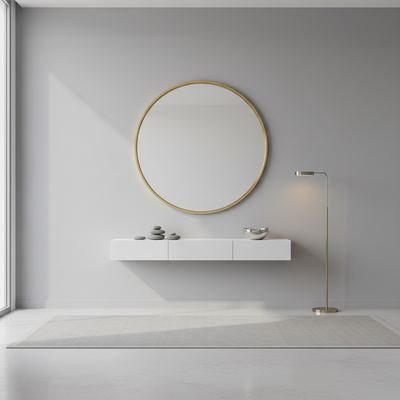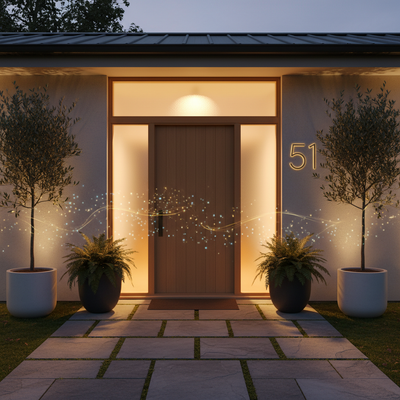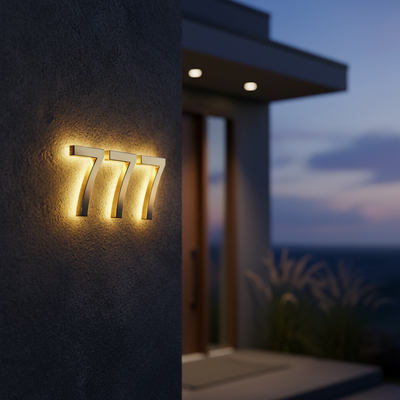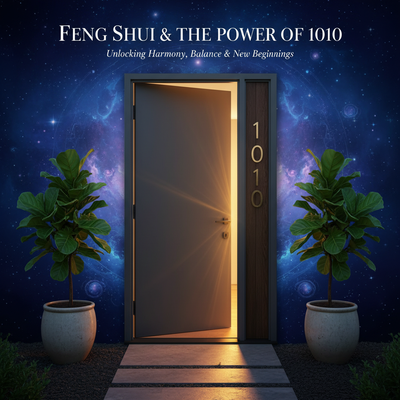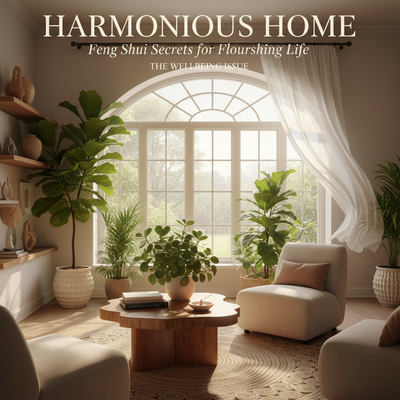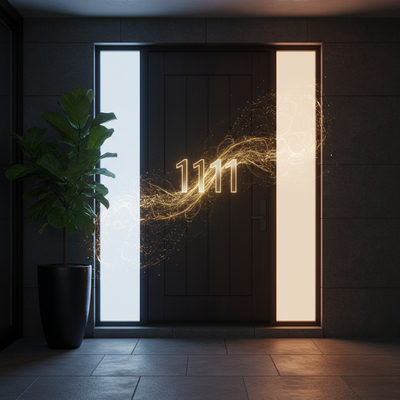Introduction: Who is Cliff Tan?

If you've watched TikTok or Instagram, you might have seen an architect quietly drawing floor plans and changing messy room layouts into spaces that work well and feel good. That's Cliff Tan, and his way of doing Feng Shui is amazing millions of people. So, what is cliff tan feng shui? It's a modern, logical way of understanding an old practice. He removes the superstition and focuses on what actually works. He explains Feng Shui not as magic but as designing spaces for happiness and health.
His main idea is simple but powerful: a good home layout makes you feel safe, comfortable, and in control. It's about how energy, or the way movement and sight lines flow, affects how you feel. This is Feng Shui as smart design, where the shape of things follows their purpose to create a space that helps you. Forget lucky objects and complicated rituals; Tan's method is about using your current furniture to create a space that just feels right.
From Architect to Internet Star
Cliff Tan's knowledge comes from his professional work as a trained architect. This background in designing spaces and buildings for people lets him break down traditional Feng Shui ideas and explain them through logic and psychology. He wrote about this easy-to-understand approach in his bestselling book, "Feng Shui Modern." He became famous on platforms like TikTok, where his clear, simple videos showing how to fix common layout problems became hugely popular. Millions of people who were scared of Feng Shui suddenly had an easy-to-follow guide for making their homes better.
Smart Design, Not Superstition
The heart of cliff tan feng shui is separating practical Feng Shui from cultural superstition. He focuses on the main goal: creating a sense of safety and efficiency. Think about it from a basic human perspective: our ancestors needed a cave that was safe from dangerous animals, with a clear view of the entrance and a protected back. Tan argues that these instincts are still with us. A well-designed room meets these unconscious needs, leading to less stress and better well-being. His method is about arranging your space to work with your human nature, making sure you feel comfortable, things flow well, and you feel in control of your environment.
The 3 Main Ideas
To use Cliff Tan's methods, you only need to understand three basic concepts. These ideas work together to create a plan for looking at and improving any room in your home. They are simple, logical, and work everywhere, no matter how big or small your home is or what style it has. By learning these ideas, you can see your space not just as a bunch of objects, but as a living environment that can be adjusted for better living.
Idea 1: The Modern Bagua
The Bagua is a mental map used in Feng Shui to divide a space into nine areas, each matching a different part of life. Traditionally, this map is lined up with a compass. Cliff Tan makes this incredibly simple: the Bagua is always positioned from the main door of the room or house. This makes it a useful tool anyone can use without a compass or special knowledge.
You simply stand at the entrance of a room and imagine a 3x3 grid on the floor plan. The row of three squares closest to you (along the entrance wall) is the foundation.
Here is the layout of the Modern Bagua, as seen from the entrance:
-
Top Row (Farthest from Door):
- Far Left: Wealth & Money Success
- Far Center: Fame & Reputation
- Far Right: Love & Relationships
-
Middle Row:
- Middle Left: Family & Health
- Center: Health & Well-being (The Heart of the Home)
- Middle Right: Creativity & Children
-
Bottom Row (Along the Entrance Wall):
- Near Left: Knowledge & Learning
- Near Center: Career & Life Path
- Near Right: Helpful People & Travel
By figuring out which area of your life falls into which part of the room, you can place objects or arrange furniture to improve that specific part.
Idea 2: Commanding Position
This is probably the most important idea in Cliff Tan's system. The Commanding Position is the spot in a room that is farthest from the door while still letting you see it clearly. Importantly, you should not be directly in line with the door's opening.
The psychology behind this is basic human instinct. Being in the Commanding Position puts you in a place of control and safety. You can see anyone or anything that enters, giving you time to react. Your back is protected by a solid wall, removing the unconscious worry of having a "blind spot." This feeling of security allows your mind to fully relax.
Three key pieces of furniture should always be placed in the Commanding Position to work their best:
- Your Bed: For deep, restful sleep without worry.
- Your Desk: For focused, productive work without distraction.
- Your Sofa: For relaxed, open socializing where you feel comfortable.
Placing these items correctly is the single most powerful change you can make to improve how a room feels and works.
Idea 3: The Five Elements
Traditional Feng Shui uses the Five Elements—Wood, Fire, Earth, Metal, and Water—in a complex system of cycles and interactions. Cliff Tan simplifies this by thinking of the elements as functional and visual qualities that you can use to balance a room. Instead of focusing on actual materials, he connects them with shapes, colors, and directions of energy.
-
Wood: Represents upward growth, life, and expansion. Use it to add height and life to a space.
- Examples: Tall floor lamps, column shapes, vertical stripes, healthy plants.
-
Fire: Represents energy, passion, and visibility. Use it to create a focal point and add active energy.
- Examples: Lighting (the ultimate Fire element), candles, triangular or pointed shapes, and bright colors like red, orange, and purple.
-
Earth: Represents stability, grounding, and nurturing. Use it to create a sense of security and permanence.
- Examples: Square or rectangular shapes (like a coffee table), low and flat furniture, and earthy colors like yellow, beige, and brown.
-
Metal: Represents logic, clarity, and precision. Use it to bring order and sharpness to a space.
- Examples: Round or oval shapes, objects made of metal, and colors like white, grey, and metallics.
-
Water: Represents flow, connection, and thinking. Use it to encourage smooth movement and communication.
- Examples: Wavy or uneven shapes, reflective surfaces like glass and mirrors, and dark colors like black and deep blue.

By understanding these functional meanings, you can consciously choose decorations and furniture to add the specific qualities your room is missing.
A Room-by-Room Guide
Now that we understand the main ideas, let's apply them to the most important rooms in your home. This section gives practical, step-by-step instructions to transform your living spaces. We'll also address common layout challenges with simple, effective solutions.
Making Your Bedroom Better
Your bedroom's main job is rest. Applying Feng Shui here is about creating a peaceful place that helps deep, restorative sleep.
- Find the Commanding Position. This is the spot diagonally farthest from the door. Place your bed here, with its headboard against a solid wall. This gives a sense of security and support.
- Make Sure You Can See Clearly. From your pillow, you should be able to see the bedroom door without being directly in its path. This prevents you from being startled and allows your nervous system to relax.
- Use a Strong Headboard. A solid headboard represents support in life and relationships. It also creates a psychological buffer between your head and the wall.
- Balance the Bed. To promote harmony in relationships (or to attract one), create symmetry around the bed. The easiest way is to use two nightstands and two lamps of similar size.
As an example of this in practice, we recently worked on a bedroom where the bed was pushed against the side wall, directly facing the door. The client said they felt unsettled and had trouble sleeping through the night. By simply moving the bed to the adjacent wall, placing it in the commanding position, they immediately felt more secure and their sleep quality improved dramatically. It was a simple change with a big impact.
-
Common Problem & Solution: What if the only place for your bed is directly in line with the door?
- Solution: This is known as the "coffin position" because energy (and people) rushes directly toward you. To soften this, place a symbolic barrier at the foot of the bed. A storage bench, a low bookshelf, or even a decorative screen will work. This piece of furniture "slows down" the energy, creating a protective shield that helps you feel more secure.
Designing Your Living Room
The living room is the heart of your home's social life. The goal here is to encourage connection, conversation, and smooth movement flow.
- Place the Sofa. The main sofa is the anchor of the room. Position it in the Commanding Position, against a solid wall, so those sitting on it can see the main entrance to the room.
- Create a Conversation Group. Arrange other seating, like armchairs or a loveseat, so they face the sofa. The goal is to create a grouping where people can easily talk to one another without shouting or turning their necks uncomfortably. Avoid placing chairs with their backs to the entrance, as this can make guests feel vulnerable.
- Make Sure Flow is Smooth. Imagine walking through the room. Are there clear pathways, or do you have to weave around furniture? The flow of traffic should be easy and unblocked. This matches the Water element, making sure energy and people can move freely.
-
Anchor the Space. Use a large area rug to define the primary conversation area. This acts as an Earth element, grounding the space and visually connecting the furniture. Make sure at least the front legs of your sofa and chairs are on the rug.
-
Common Problem & Solution: What if you have an open-concept living room that blends into the dining area or kitchen?
- Solution: You need to create a "room within a room" to define the living space. The easiest way is to use furniture as a boundary. Place a console table or a low bookshelf against the back of the sofa. This creates a clear visual endpoint for the living area without putting up a wall. A large area rug also works wonders to mark the space.
Setting Up Your Home Office
In today's world, a home office needs to be a powerhouse of productivity and focus. The Feng Shui of this space is critical for career success.
- Position Your Desk. This is non-negotiable. Place your desk in the Commanding Position. You must be able to see the door from your chair, but you should not be sitting directly in line with it. Having your back to the door creates constant, low-level anxiety and makes it hard to concentrate.
- Have a Solid Wall Behind You. Just like a headboard on a bed, a solid wall behind your desk chair provides symbolic support. It means you have backing in your career and feel secure in your position. Avoid having a window or the door directly behind you.
-
Use the Bagua Map. Your desk is a small version of your career. Once it's in the Commanding Position, you can use the Bagua map to improve specific goals. Place a lamp (Fire element) in the Fame & Reputation corner (far center) to increase your visibility at work. Position your computer or a healthy plant in the Wealth & Money Success corner (far left) to encourage growth.
-
Common Problem & Solution: What if your "office" is just a desk in the corner of your bedroom or living room?
- Solution: It's important to create a psychological separation between work and life. Use a physical divider to section off your workspace. A decorative folding screen or a tall, open-backed bookshelf can create a visual boundary. At the very least, place a dedicated rug under your desk and chair. This defines the "office zone" and helps contain work energy, preventing it from spilling into your relaxation space. When you're done for the day, turn off the computer and step off the rug.
Cliff Tan vs. Traditional Feng Shui
Many people who are new to Feng Shui wonder how cliff tan feng shui fits in with the traditional practice they may have heard about. While both systems share the ultimate goal of creating harmony between people and their environment, their philosophies and applications differ significantly. Understanding these differences can help you choose the approach that best suits your needs and worldview.
Key Differences
The most significant difference lies in the basic tools and guiding principles. Cliff Tan's method prioritizes psychology and practical function, making it universally accessible. Traditional Feng Shui is a more complex system rooted in cosmology, compass directions, and the flow of an unseen energy called Qi.
| Feature | Cliff Tan's Approach (Modern) | Traditional Feng Shui |
|---|---|---|
| Bagua Orientation | Based on the room's main door. It's relative and user-centered. | Based on cardinal compass directions (North, South, East, West). It's fixed. |
| Cures & Remedies | Uses furniture placement, color, lighting, and functional items. | May use specific objects like faceted crystals, special mirrors, or statues. |
| Core Principle | Psychology, basic safety, and practical function. | Flow of Qi (life force energy), harmony with nature, and cosmology. |
| Accessibility | Highly accessible and DIY-friendly. Can be learned from a book or videos. | Often requires a professional consultant and deeper study of complex charts. |
When to Choose Modern
Both systems offer value, and they are not mutually exclusive. However, Cliff Tan's approach is an excellent and empowering starting point for anyone looking for a secular, logical, and practical way to improve their home. His method gives you the tools to analyze your own space and make immediate, impactful changes without needing to subscribe to a belief system or purchase specialized items. It is Feng Shui for the modern mind.
If you are looking to solve real problems—like poor sleep, lack of focus, or an awkward living room layout—the modern approach provides direct and effective solutions. It's about making your home work better for you, right now.
Beyond the Basics
Once you've applied the main ideas to your most important living areas, you may feel inspired to go deeper. Cliff Tan's philosophy provides a strong foundation, but there are always more layers to explore and more ways to fine-tune your environment. Whether you want to continue learning on your own or need help with a particularly challenging space, there are clear next steps you can take.
More Resources
To continue your journey, the best place to start is with the source.
- Book: Cliff Tan's book, Feng Shui Modern, is the complete guide to his entire system. It expands on the principles discussed here with detailed diagrams, case studies, and solutions for a wide variety of floor plans.
- Social Media: His channels on TikTok and Instagram (@dearmodern) are a fantastic resource for bite-sized tips, visual examples, and Q&A sessions where he analyzes user-submitted floor plans.
When You Are Stuck
While DIY Feng Shui is powerful, some spaces present unique challenges. Oddly shaped rooms, multiple entrances, or conflicting needs of different family members can be difficult to solve with general rules alone. If you feel stuck or want to optimize your home for very specific life goals, seeking professional guidance is a logical next step.
Applying these principles can transform a space, but sometimes unique layouts or specific life goals require a more personalized strategy. For those seeking expert guidance, professional teams like THE QI FLOW specialize in applying modern Feng Shui principles to help clients solve complex spatial puzzles and optimize their homes for well-being, success, and harmony. A consultation can provide tailored solutions and deeper insights that are specific to your home and your aspirations.
Your Home, Your Foundation
Ultimately, the goal of Cliff Tan's Feng Shui is to empower you. It's about recognizing that your home is not just a passive container for your life, but an active partner in your well-being. By arranging your space with intention, you create a supportive, nurturing environment that helps you feel safe, focused, and relaxed.
Don't feel pressured to change your entire home at once. Start small. Choose one room—or even just one corner—and make a single change. Move your desk into the Commanding Position. Place a lamp in your Wealth corner. See how it feels. Even one small adjustment can make a significant difference, setting in motion a positive ripple effect that enhances your entire life. Your home is your foundation; build it to support the life you want to live.
